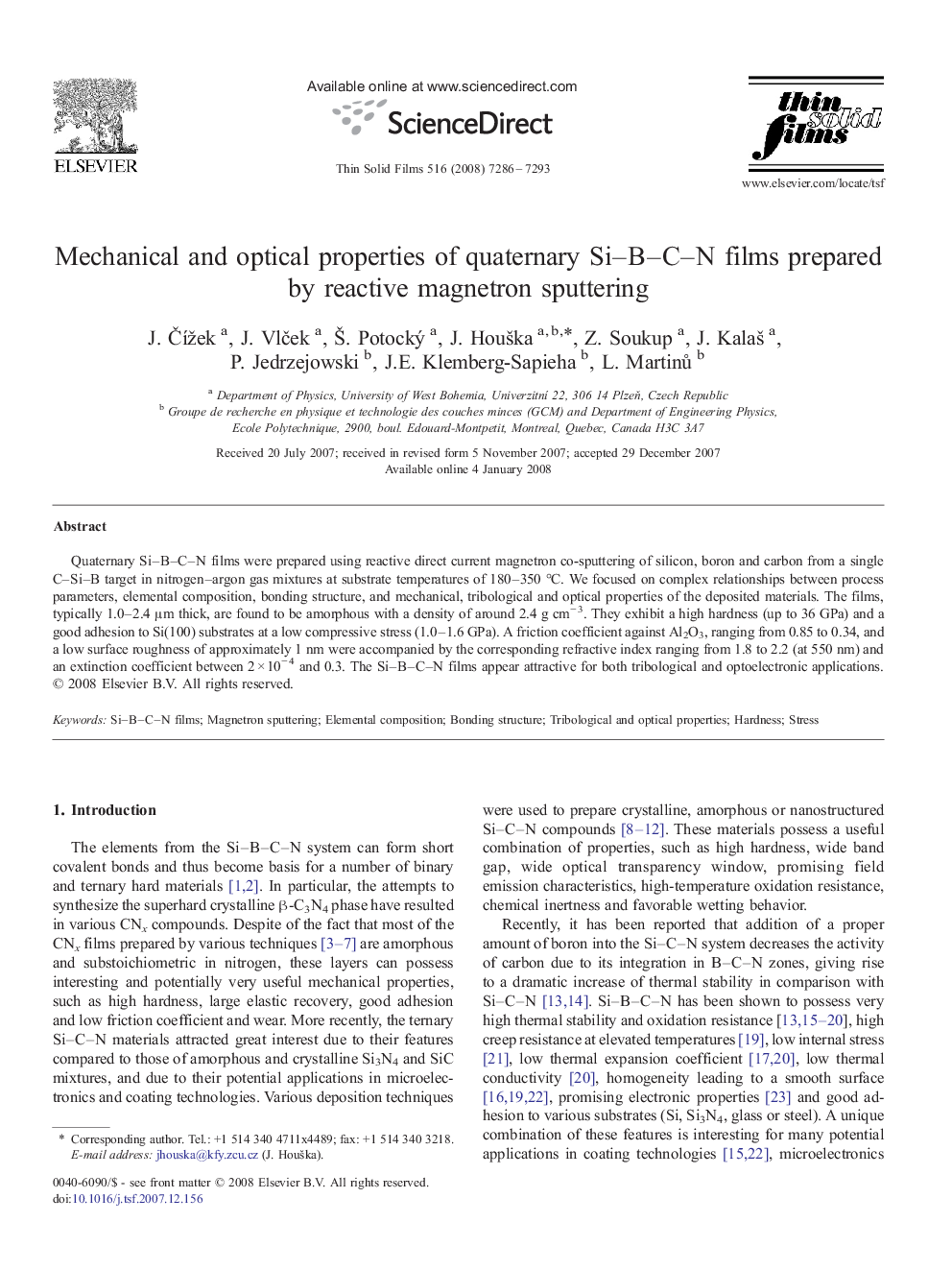| Article ID | Journal | Published Year | Pages | File Type |
|---|---|---|---|---|
| 1673873 | Thin Solid Films | 2008 | 8 Pages |
Quaternary Si–B–C–N films were prepared using reactive direct current magnetron co-sputtering of silicon, boron and carbon from a single C–Si–B target in nitrogen–argon gas mixtures at substrate temperatures of 180–350 °C. We focused on complex relationships between process parameters, elemental composition, bonding structure, and mechanical, tribological and optical properties of the deposited materials. The films, typically 1.0–2.4 μm thick, are found to be amorphous with a density of around 2.4 g cm− 3. They exhibit a high hardness (up to 36 GPa) and a good adhesion to Si(100) substrates at a low compressive stress (1.0–1.6 GPa). A friction coefficient against Al2O3, ranging from 0.85 to 0.34, and a low surface roughness of approximately 1 nm were accompanied by the corresponding refractive index ranging from 1.8 to 2.2 (at 550 nm) and an extinction coefficient between 2 × 10− 4 and 0.3. The Si–B–C–N films appear attractive for both tribological and optoelectronic applications.
